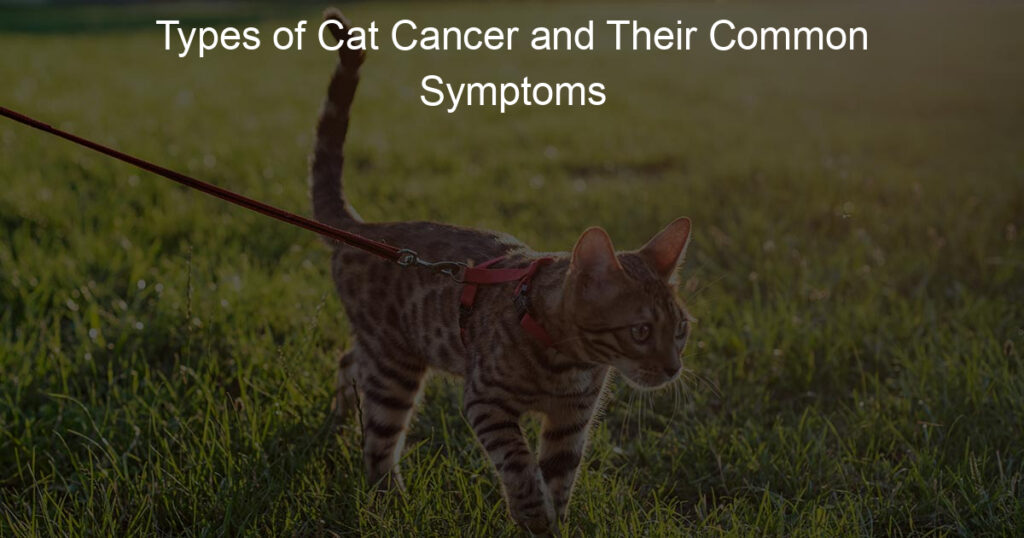Cancer is one of the most dreaded words for any pet parent, and cats are no exception. Unfortunately, cancer can be a common disease among cats, particularly as they age. Though it’s never easy to hear a diagnosis of cancer from your vet, understanding the types of cancer present in cats and their common symptoms can help you make decisions about treatments that could potentially extend your cat’s life expectancy.
In this blog post, we’ll dive into what cat cancers look like, so you know how to best advocate for your feline friend if they should ever experience it.
What is the most common cancer for cats?
Cats are just as likely to get cancer as people, and in fact, it is the leading cause of death for cats over 15 years old. The most common type of cancer in cats is lymphoma, which is a malignant tumor of the lymph nodes.
It affects lymphocytes — white blood cells that play an important role in fighting off diseases — and can spread to other organs. Symptoms commonly associated with feline lymphoma include weight loss, depression, vomiting, difficulty breathing, and swollen lymph nodes.
If caught early enough, this type of cancer can be treated successfully with chemotherapy or radiation therapy. However, when it’s not addressed timely or aggressively enough, it can be fatal for cats. Therefore, it’s important to bring any suspicious changes to your veterinarian’s attention right away.
What are the early signs of cancer in cats?
Cat owners need to be aware of early signs of cancer in cats, as quickly catching and treating the condition is crucial for a positive outcome. Signs that cancer may be present can include small lumps or bumps on or under the skin, coughing that persists despite treatment for the underlying cause, changes in appetite and activity level, abnormal bleeding or discharge, and ongoing weight loss.
Many of these symptoms can easily be explained by other illnesses, so if your cat shows any of these signs it’s best to schedule an appointment with your veterinarian right away. Early diagnosis of cancer in cats is key to making sure they receive prompt care and have the best chance at living a long and healthy life.
What is the most aggressive cancer in cats?
Cancer is one of the most lethal diseases affecting cats. Among them, one of the most aggressive forms is feline lymphoma.
This cancer attacks rapidly and obtains a hold throughout the body, causing an array of symptoms like fatigue, loss of appetite and weight, vomiting, and swelling in specific organs or lymph nodes. Fortunately, it can be treated with chemotherapy or even a radical surgical procedure that follows intensive preparation and care for the development of smaller tumors in young cats.
However, treatment requires careful monitoring and administering of steroids due to the complex side effects they can have on other organs or systems. With early and effective management, however, there is great potential that cats suffering from this form of cancer can live long and healthy lives.
How long can a cat live with cancer?
The dread of a cancer diagnosis affects animals just as much as it does humans. When it comes to cats with cancer, the prognosis can vary drastically depending on the type and stage of the cancer.
In general, cats with a treatable or manageable form of cancer that is caught early enough may have normal life expectancies that range anywhere from months to years. However, some cancers are more aggressive and resistant to treatment, resulting in reduced lifespans ranging from weeks to months.
Ultimately, cat owners should work with their veterinarians to accurately assess their pet’s health situation and create appropriate plans for both short-term and long-term treatment going forward.
Do cats with cancer sleep more?
While cats with cancer can experience increased sleep due to physical exhaustion from the disease, not all cats with cancer will display an increase in sleep. Some may show a slight decrease in physical activity, but most will continue their normal sleeping patterns as before. It is also important to note that some cats may sleep less during certain periods of the illness depending on other factors, such as general comfort or pain levels.
Ultimately, your beloved pet should seek veterinary advice if you notice changes in their sleeping patterns that seem out of the ordinary. Being aware and paying attention to your cat’s behavior will help ensure they live the happiest, healthiest life possible!
Closing Thoughts: Types of Cat Cancer and Their Common Symptoms
Cat cancer is a serious concern for any pet owner. Although there are many different types of cat cancer, it’s important to look out for common symptoms that may signal the presence of cancer in your cat.
Common symptoms can include biting or licking lesions, loss of appetite, weight loss, and swollen lymph nodes. If you see any abnormalities or signs that indicate something may be wrong with your pet, seek veterinary care as soon as possible. Early diagnosis and treatment of cancer can greatly increase the chances of healing and lead to a longer and happier life for your beloved feline friend.
With new technologies and breakthroughs in veterinary science, cats suffering from all forms of cancer now have access to more advanced treatment options than ever before. With the right information and some proactive measures, you can help keep your kitty safe and healthy throughout its lifetime.












